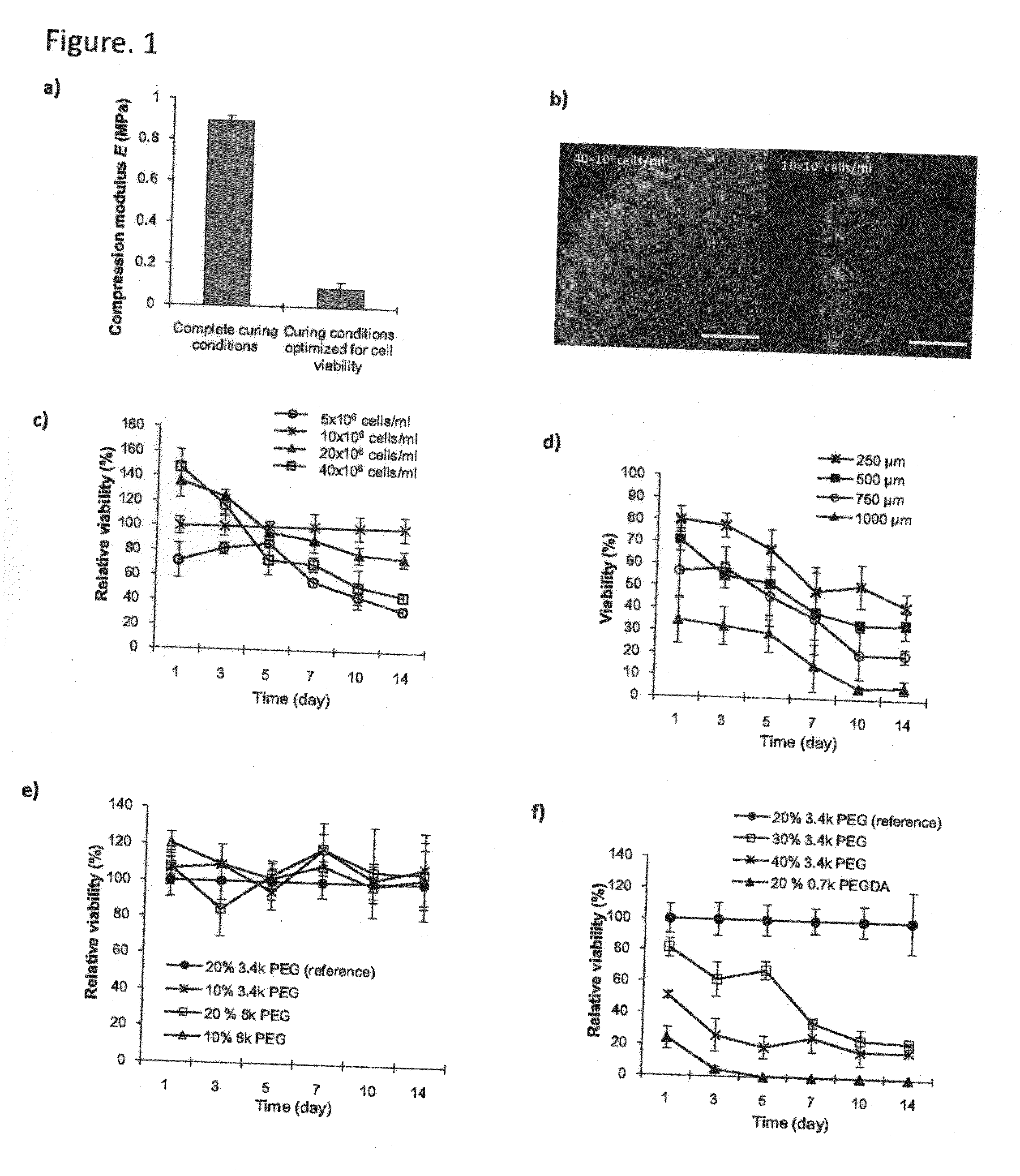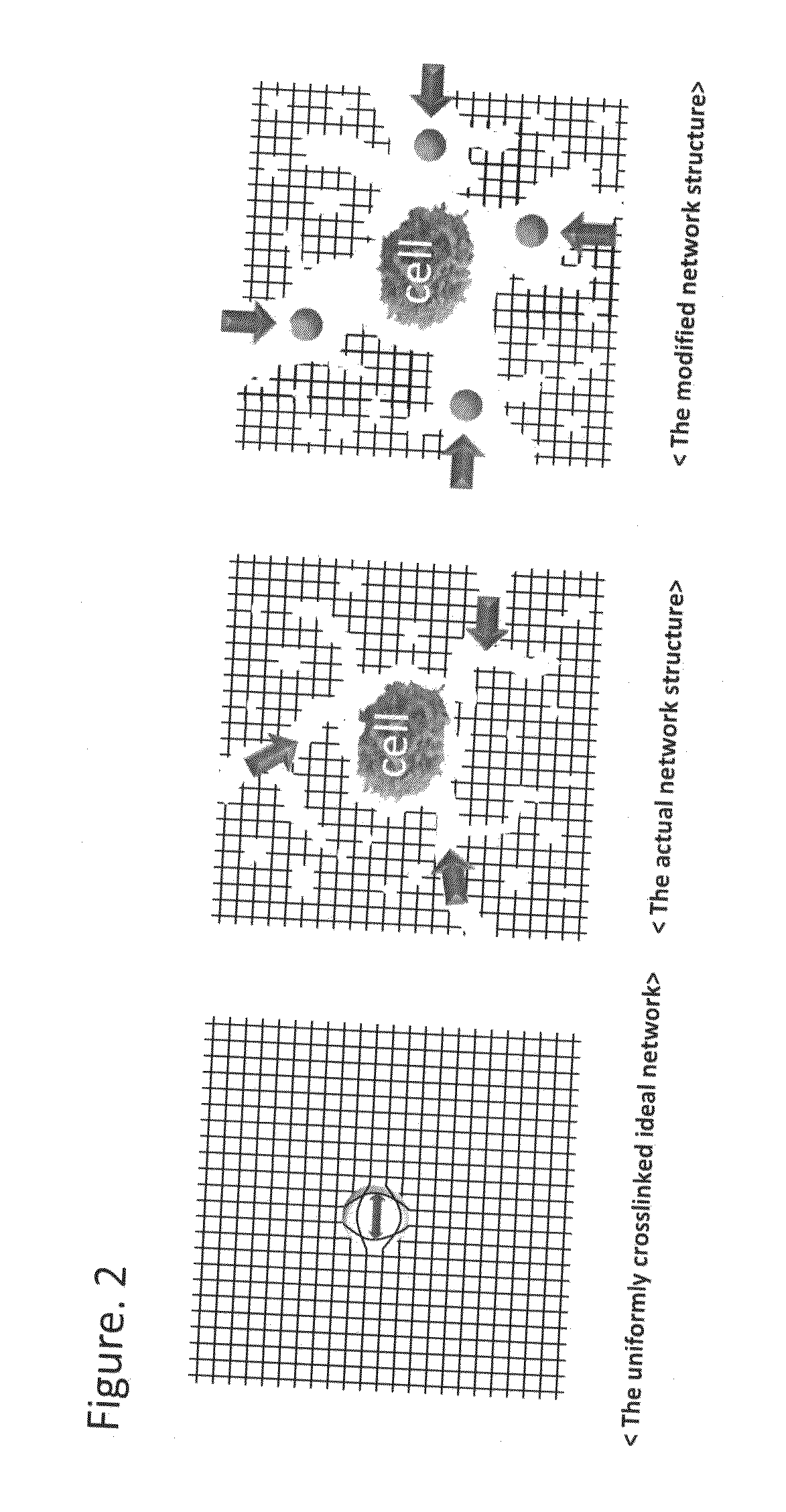Hydrogels with network defects enhanced by nanoparticle incorporation
- Summary
- Abstract
- Description
- Claims
- Application Information
AI Technical Summary
Benefits of technology
Problems solved by technology
Method used
Image
Examples
example 1
Hydrophobic Nanoparticles Improve Permeability of Cell-Encapsulated Poly(Ethylene Glycol) Hydrogels while Maintaining Patternability
[0066]The viability of encapsulated liver-derived cells has been shown to be susceptible to the encapsulating matrix diffusion condition, and so we utilized human liver-derived cells as a model to evaluate the structure of cell-encapsulated PEG networks. We used immortalized Huh 7.5 cells to optimize cell-encapsulating conditions, which were subsequently applied to human primary hepatocytes. In this study, we show that the optimized protocol for cell encapsulation leads to formation of network defects, and that the level of network defects is the appropriate spatial feature to address permeability in designing the network. This understanding led us to augment the level of network defects by incorporating hydrophobic poly(lactic-co-glycolic acid) (PLGA) nanoparticles (NPs) within the hydrophilic PEG network; we have verified that this modification improv...
PUM
| Property | Measurement | Unit |
|---|---|---|
| Length | aaaaa | aaaaa |
| Fraction | aaaaa | aaaaa |
| Fraction | aaaaa | aaaaa |
Abstract
Description
Claims
Application Information
 Login to View More
Login to View More - R&D
- Intellectual Property
- Life Sciences
- Materials
- Tech Scout
- Unparalleled Data Quality
- Higher Quality Content
- 60% Fewer Hallucinations
Browse by: Latest US Patents, China's latest patents, Technical Efficacy Thesaurus, Application Domain, Technology Topic, Popular Technical Reports.
© 2025 PatSnap. All rights reserved.Legal|Privacy policy|Modern Slavery Act Transparency Statement|Sitemap|About US| Contact US: help@patsnap.com



